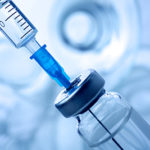By John H. Unkel, MD, MPA, DDS, FAAP
Six year old Caleb Sears died in an oral surgeon’s office in 2015 following administration of five sedatives resulting in apnea and cardiac arrest. In response to the adverse event the California Assembly requested the Dental Board of California to review current statutes on dental anesthesia/deep sedation. Loggerheads then developed over safety of sole surgeon-anesthetist model, access to anesthesia and costs of anesthesia when using the combined sole surgeon-anesthesia verses the separate anesthetist and surgeon model. The California assembly members supported one model and senate members sponsored another version to further develop and codify a statute. The senate version prevailed, SB501, and became law in 2018.
Outcome Synopsis
- Dental Board required to review all adverse events on anesthesia/sedation and maintain anesthesia/sedation adverse events for 15 years
- Dental Board shall provide a report on pediatric deaths related to deep sedation/general anesthesia at time of sunset review
- Office of Public Health will provide analysis of capacity of anesthesia by sole surgeon vs separate anesthesia provider, capacity of state’s dental anesthesia, access to anesthesia and other barriers and role of pediatric anesthesia meeting state’s overall health goals
- Anesthesia/sedation for patients under 13 years old mandates two providers in addition to the dentist with one of the two monitoring the sedation/anesthesia and maintaining PALS certification and
- Anesthesia/deep sedation for patients under 7 years old, the dentist must have a pediatric endorsement of their general anesthesia permit and perform 20 deep sedation/anesthesia cases in 24 months prior to receiving the endorsement
- Retain single provider as anesthetist and surgeon
Grey area – Qualifications of monitoring personal if not an anesthetist/anesthesiologist or oral surgeon
- CA law – Successful completion of a board-approved dental sedation assistant course, which may commence after the completion of six months of work experience as a dental assistant
- CA Dental assistant sedation course consists minimally consists of 110hrs: 40hrs didactic, 38hrs clinical education and 32hrs combined preclinical and laboratory instruction
- Credentials/training of dental sedation assistants – is coursework and clinical training adequate
- Oral surgeon’s determine curriculum and training – is this acceptable for pediatrics?
Where are we today?
- Oral surgeons developing database for adverse events. Have sought Pediatric Dentists input.







